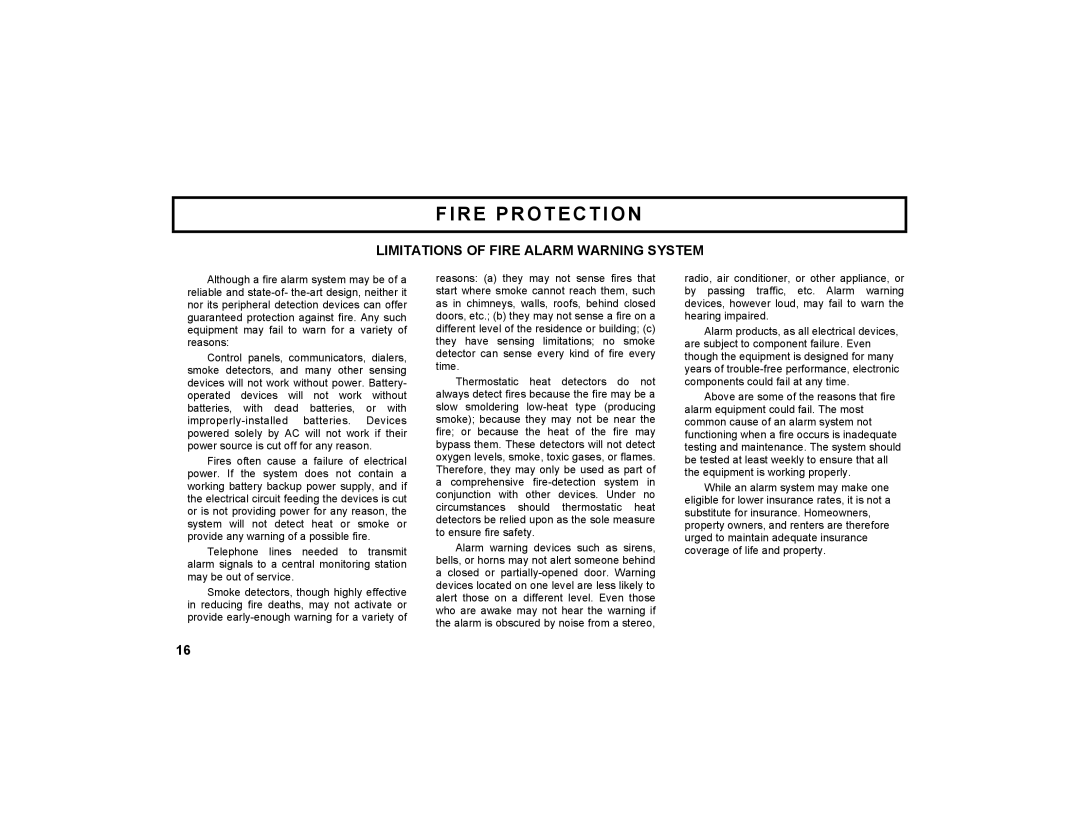FIRE PROTECTION
LIMITATIONS OF FIRE ALARM WARNING SYSTEM
Although a fire alarm system may be of a reliable and
Control panels, communicators, dialers, smoke detectors, and many other sensing devices will not work without power. Battery- operated devices will not work without batteries, with dead batteries, or with
Fires often cause a failure of electrical power. If the system does not contain a working battery backup power supply, and if the electrical circuit feeding the devices is cut or is not providing power for any reason, the system will not detect heat or smoke or provide any warning of a possible fire.
Telephone lines needed to transmit alarm signals to a central monitoring station may be out of service.
Smoke detectors, though highly effective in reducing fire deaths, may not activate or provide
reasons: (a) they may not sense fires that start where smoke cannot reach them, such as in chimneys, walls, roofs, behind closed doors, etc.; (b) they may not sense a fire on a different level of the residence or building; (c) they have sensing limitations; no smoke detector can sense every kind of fire every time.
Thermostatic heat detectors do not always detect fires because the fire may be a slow smoldering
acomprehensive
Alarm warning devices such as sirens, bells, or horns may not alert someone behind a closed or
radio, air conditioner, or other appliance, or by passing traffic, etc. Alarm warning devices, however loud, may fail to warn the hearing impaired.
Alarm products, as all electrical devices, are subject to component failure. Even though the equipment is designed for many years of
Above are some of the reasons that fire alarm equipment could fail. The most common cause of an alarm system not functioning when a fire occurs is inadequate testing and maintenance. The system should be tested at least weekly to ensure that all the equipment is working properly.
While an alarm system may make one eligible for lower insurance rates, it is not a substitute for insurance. Homeowners, property owners, and renters are therefore urged to maintain adequate insurance coverage of life and property.
16
